Your elbows are involved in almost every upper body exercise you do, and some lower body ones too. Because of this, elbow pain can have a huge impact on your workouts and could even stop you from training at all.
Because the elbows are such a frequently used joint, elbow pain is all too common and is often caused by a type of overuse injury. After all, as they’re involved in so many exercises, your elbows take a hammering every time you set foot in the gym or do a workout at home.
You might train chest on one day and back the next, but almost every day is elbow day, so it’s no wonder so many lifters have elbow pain.
Types of Elbow Pain
Broadly speaking, strength training elbow pain is caused by one of two conditions. There are other causes of elbow pain, but, in my experience, these are the most common.
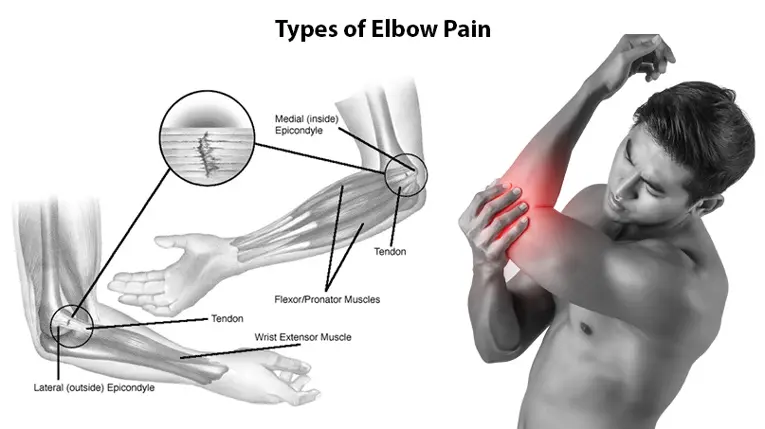
1 – Medial epicondylitis
More commonly known as golfer’s elbow, this condition causes pain around the inside of your elbow. Medial means inside and epicondylitis means inflammation around the small bony structure that resides there – the condyle.
While this issue can be caused by playing a lot of golf, gym-goers can get it too. If exercises like pull-ups, pulldowns, and biceps curls cause pain on the inside of your elbow, there is a good chance that you’re suffering from medial epicondylitis.
Level Up Your Fitness: Join our 💪 strong community in Fitness Volt Newsletter. Get daily inspiration, expert-backed workouts, nutrition tips, the latest in strength sports, and the support you need to reach your goals. Subscribe for free!
2 – Lateral epicondylitis
Lateral epicondylitis affects the outside of the elbow joint and is often known as tennis elbow. Like golfer’s elbow, you can develop this painful condition even if you’ve never picked up a tennis racket.
If your elbows hurt during chest and shoulder pressing exercises, and when you train your triceps, you may be suffering from lateral epicondylitis.
With both these conditions, the source of pain is inflammation of the tendon that connects your muscles to your bones. Doing the same exercises over and over, not resting enough between workouts, or doing exercises incorrectly can put a lot of extra stress on these areas.
If, like many lifters tend to do, you just ignore the pain and work through it, what started off as mild discomfort can turn into debilitating pain.
Because of this, if you have mild elbow pain, you should take steps to avoid letting it get worse. But, if your elbow pain is severe, you should seek medical attention because you may need more than just a little rest for it to heal.
13 ways to avoid elbow pain
It’s beyond the scope of this article to tell you how to treat your elbow pain – that’s the job of a physical therapist, doctor, or even a surgeon. But I can provide you with some practical ways to avoid it in the first place.
After all, when it comes to injuries, prevention is better than cure anyway!
You can also use these methods if you have very mild elbow pain and want to stop it from getting worse while you keep training. It may be enough to allow your elbows to heal naturally. But, if your problem is not abating or is getting worse, you MUST get professional advice from a qualified medical practitioner.
So, here are 13 ways to avoid elbow pain in the gym.
1 – Stop doing biceps curls with a straight bar
Straight bar biceps curls are probably the leading cause of medial epicondylitis – that’s golfer’s elbow. It’s the exercise that many lifters favor for building bigger, stronger biceps, but it’s also the one that’s hardest on your elbow joint.
The problem with this exercise is that it forces you into a very fixed position. This position is unnatural and even feels uncomfortable for many of us. The pain caused by this exercise is often made worse because barbell biceps curls are one of those moves where lifters like to go heavy. Heavy weights plus mechanically compromised joints equal injury!
If you want to avoid elbow pain, it’s time to drop the straight bar biceps curls from your workouts. Switch to dumbbell or EZ bar curls, which are much easier on your elbows but still effective biceps builders.
2 – Don’t do underhand-grip chin-ups or pulldowns
Despite being lat exercises, both underhand chin-ups and pulldowns affect your elbows in the same way as straight bar biceps curls. In fact, if you look at the elbow action of both these exercises, you’ll soon see the similarities.
Because of this, to prevent inner elbow pain, you should think twice before doing either of these two exercises. Straight bar underhand rows should be on your not-to-do list too.
Instead, use an overhand grip or, better still, a parallel or neutral grip. If you absolutely must do underhand chin-ups, pulldowns, or rows, look for options that allow you to use an angled EZ-bar. Anything that prevents your wrists from being completely supinated can help lower your risk of elbow pain.
3 – Be wary of pull-ups and overhand pulldowns too
Pull-ups and pronated grip pulldowns are less likely to cause medial elbow pain, but they can cause lateral pain instead. So, does that mean that all types of pulldown and pull-ups are out if you want to keep your elbows healthy and pain-free?
Definitely not!
However, you should avoid doing tons of pronated grip training simply because you’ve cut down on exercises that involve using a supinated grip. This will create a different kind of overuse and, if you’re not careful, you could end up with golfer’s and tennis elbow at the same time!
Avoid potential problems by using a neutral grip as well as a pronated grip, and don’t train with a pronated grip too often. A couple of times a week is plenty, and don’t go too heavy.
Unless you are a powerlifter, you don’t need to do sets of six or fewer reps per set. Instead, focus more on sets of 8-12 reps. This means using lighter weights, which are easier on your joints, and it’s also the rep range most often prescribed for building muscle mass.
4 – Change the way you do skull crushers
Skull crushers are a great triceps exercise that is also hard on your elbows. For a lot of lifters, it’s a good way to develop a nasty case of tennis elbow. Think of skull crushers like straight bar biceps curls – after all, they’re essentially the same movement done in reverse.
There are a few things you can do to make this triceps builder less of an elbow wrecker. For a start, don’t do them with a straight bar, and use an EZ bar instead. This will put your wrists in a much more elbow-friendly position.
Better still, use a bar that allows you to adopt a neutral grip. Doing skull crushers with dumbbells is another good option, providing you do them with your palms facing each other.
To take as much stress off your elbows as possible, lower the weight more toward the top of your head and away from your face. This produces a less severe joint angle, which is easier on your elbows.
Level Up Your Fitness: Join our 💪 strong community in Fitness Volt Newsletter. Get daily inspiration, expert-backed workouts, nutrition tips, the latest in strength sports, and the support you need to reach your goals. Subscribe for free!
5 – Try higher reps and lighter weights for biceps and triceps
Nothing aggravates elbow pain like heavy biceps and triceps training. Most biceps and triceps exercises are isolation in nature, and that means the only joint moving is your elbow joint. Needless to say, combined with heavy weights, that means your joints take a hammering whenever you train bis and tris with big weights.
Take a load off your elbows by using light to moderate weights and doing moderate to high reps. Chase the pump, instead of trying to hoist the heaviest weights possible.
Make those lighter weights feel heavier by using a slow lifting tempo, like up in three, down in three, or trying some blood flow restriction or occlusion training. These methods are all useful for increasing exercise intensity without resorting to heavy weights.
6 – Don’t train your arms more than once per week
This might be blasphemous to some lifters, but one biceps and triceps workout is more than enough for most people. Doing more could increase your risk of developing elbow pain. After all, biceps and triceps exercises are amongst the hardest on your elbow joints.
One way to do this, while making sure your arms continue to grow, is to separate your back and biceps workouts and your chest and triceps workouts, like this:
- Monday – chest and biceps
- Tuesday – legs
- Wednesday – rest
- Thursday – back and triceps
- Friday – rest
- Saturday – shoulders
- Sunday – rest
That way, you can train your biceps and triceps twice per week, but one of those workouts is indirect. After all, most back exercises also work your biceps, and most chest exercises also work your triceps.
7 – Keep your wrists straight
A lot of elbow problems start with your wrists. Flexing or extending your wrists throws stress onto your elbow joints. Do that often enough, and your elbows will start to suffer. Because of this, you should always try and keep your wrists straight during all pulling and pushing exercises.
Wrists tend to get bent out of shape on pushing exercises when you use very heavy weights. Reduce the load or, if that’s not an option, consider wearing wrists wraps to keep your joints correctly aligned.
On back exercises, people bend their wrists to pull the bar in or down a little further. This is not only a good way to aggravate your elbows, but it also does nothing for the muscles you are training. Instead, keep your wrists straight and focus on pulling your elbows back. That will make your chosen exercise more effective and safer too.
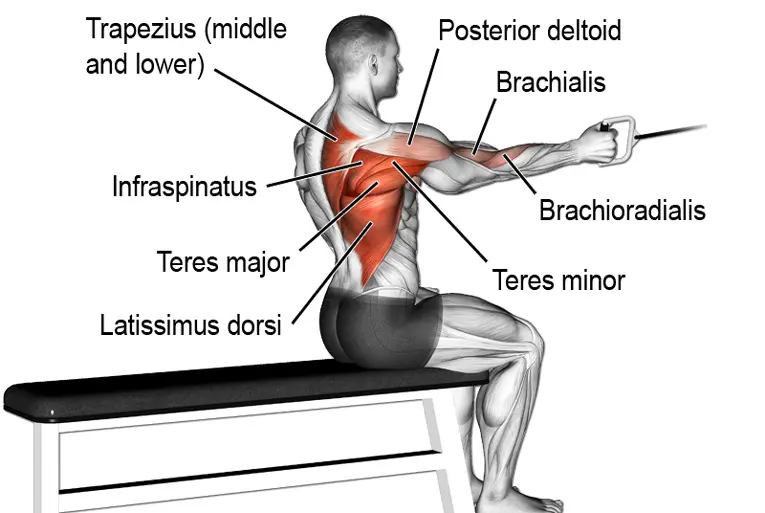
8 – Ditch the dead hang
A lot of people pause between reps of pull-ups with their arms fully straight. This is sometimes called a dead hang. When your arms are extended like this, more of your weight is supported by your joints than your muscles, and that could increase your risk of joint pain.
Avoid this problem by straightening your elbows but not extending them fully. Keep the tension on your muscles and off your joints. This means you won’t be able to sneak a quick rest between reps, but your elbows will thank you for it.
I don’t mean you can start doing half reps in the name of protecting your elbows. That’s cheating! Just shave the last inch or so off your range of motion. Done right, it should still look like you’re doing full reps.
9 – Stop locking your elbows on pressing exercises
Locking your elbows on any pressing exercise can contribute to joint pain. When you lock your elbows, all the weight that was on your muscles is transferred to your joints. This crushes the ends of your bones together, which is potentially as dangerous as it sounds. Do this often enough, and the cause of your joint pain could be worn and damaged cartilage and not just inflamed tendons.
Avoid this problem by straightening and not locking your elbows when you do bench and overhead presses. The difference between straightening and locking your elbows is very small but will be enough to keep the weight on your muscles and off your joints.
10 – Take extra care on preacher curls
Preacher curls, also known as Scott curls, are a great way to isolate your biceps, but can also be hard on your elbows. This is especially true if you lower the weight too fast and bounce out of the bottom of each rep.
With your upper arms locked into position, it’s all too easy to hyperextend your elbows while doing this exercise, and that could quickly turn this biceps builder into an elbow destroyer.
Stop preacher curls from hurting your elbows by lowering the weight slower than you lift it, and stopping just short of full elbow extension. And definitely do not relax at the bottom of each rep. Finally, make sure you use an EZ bar or dumbbells and not a straight bar for all the reasons discussed in point #1.
11 – Wear elbow sleeves
Lifters who squat heavy or have knee pain often wear knee sleeves. Usually made from neoprene, these sleeves provide light to medium support and also keep the joints warm. Knee sleeves are quite a common sight in gyms, and that suggests they actually work.
Elbow sleeves aren’t so common, but if you have ever had or just want to avoid elbow pain, maybe a pair of elbow sleeves is not such a bad idea, especially on heavy training days.
Neoprene is probably the best material for elbow sleeves, as it’s insulating and supportive. However, you should avoid very thick models as they could reduce your range of movement. 3-5mm should be more than thick enough for most users.
12 – Use lifting straps
A lot of elbow issues are actually caused by gripping too hard and too often. Tennis elbow is an excellent example of this. But, it’s hard to avoid gripping when you hit the gym several times a week. After all, how else can you do curls, rows, pulldowns, deadlifts, etc.?
One way to give your gripping muscles a break, taking pressure off your elbows in the process, is to use lifting straps. Lifting straps increase the friction between your hands and the bar/handle you are using, so you don’t have to squeeze so hard.
This doesn’t mean you should use lifting straps whenever you train your back or biceps, but you could use them on your heaviest sets if it means your elbows won’t feel so beaten up afterward. Using straps all the time will weaken your gripping muscles, and that can cause elbow pain too.
13 – Stretch your forearms
Tight forearms are a common cause of elbow pain. Even if you stretch regularly, you probably don’t stretch your lower arms very often, if at all. Strength training workouts involve a lot of gripping, and that can cause adaptive shortening so that your hands naturally close when you relax. If this happens to you, you definitely need to stretch your forearms.
There are lots of different forearm stretches, but this is one of the best. Be warned, it’s also painful, especially if your muscles are tighter than guitar strings!
Complement this stretch with some self-massage. Use your opposite hand to work deep into the tissues of your forearm and elbow to release tension, free up fascia, increase blood flow, and speed up the removal of inflammatory waste products.
Wrapping up
Take it from one who knows; elbow pain can be a miserable experience. It usually starts off as nothing more than a minor ache, but, because most lifters try and train through it, it can soon become a major source of frustration.
From personal experience, I can tell you that ignoring elbow pain can mean weeks of missed workouts, and even make things like using your phone or eating problematic.
Use these strategies to prevent elbow pain or give existing problems a chance to heal. But remember, if your elbows don’t get better soon, or are getting worse, you should seek medical advice. After all, if you ignore what is initially a minor problem, it can become a more serious one that takes months of treatment and rest to fix.

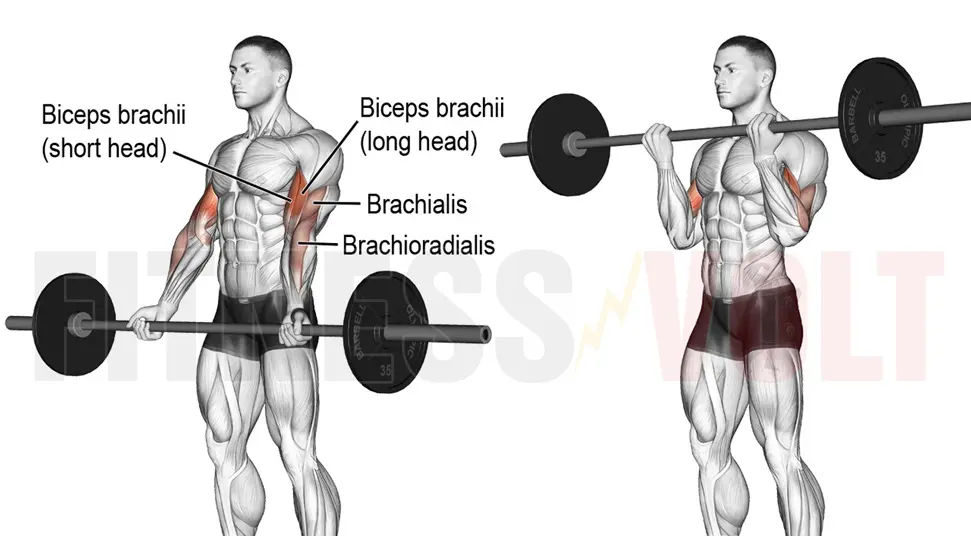
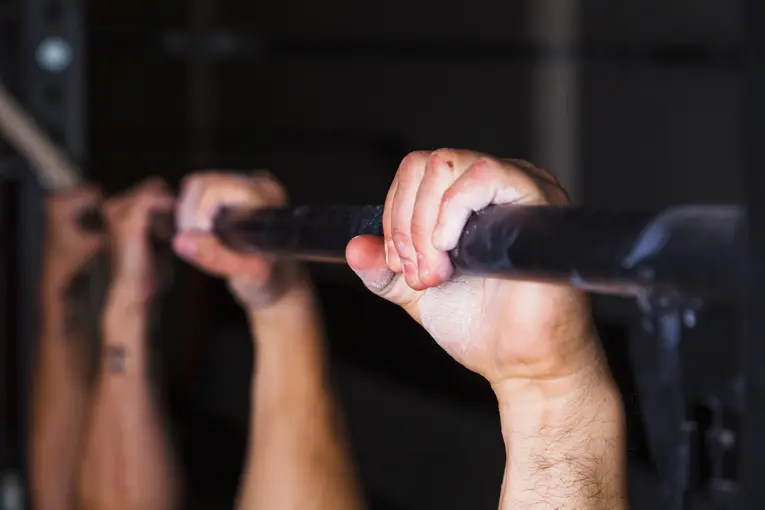
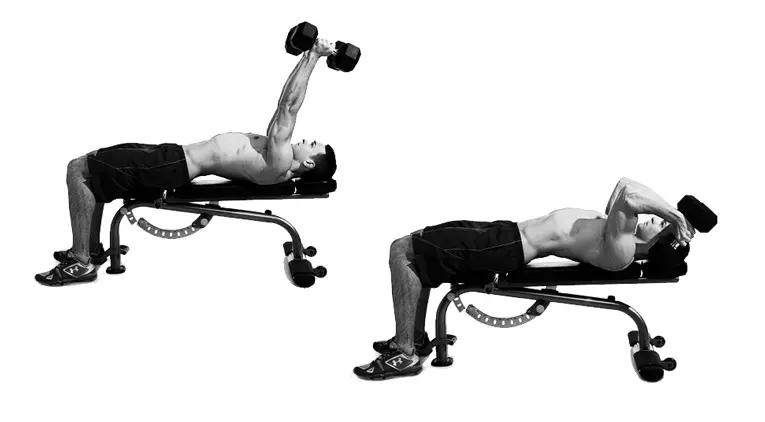
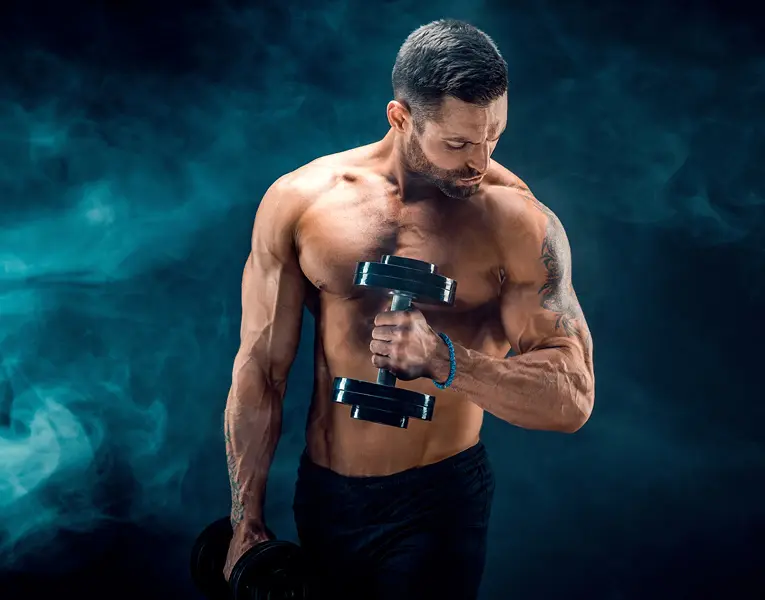

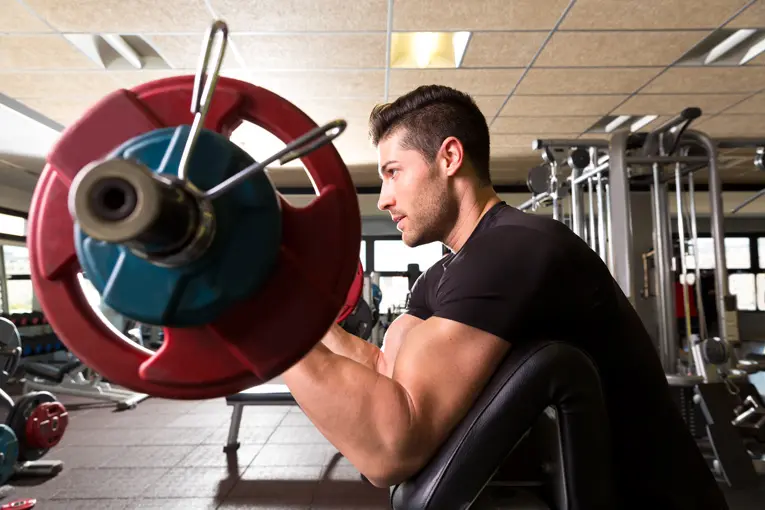
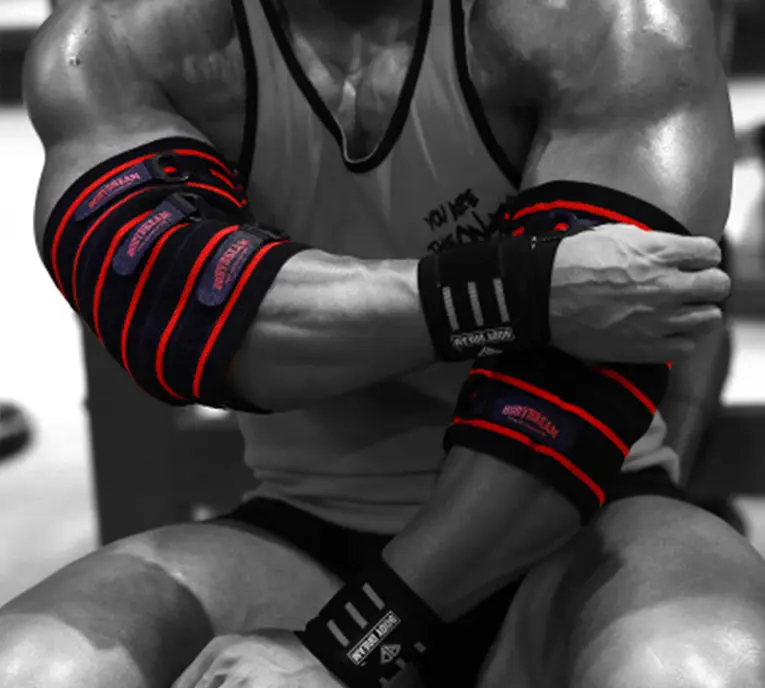

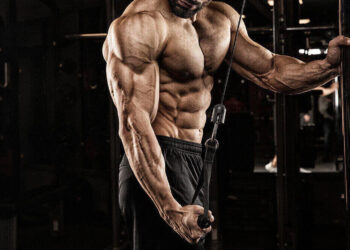


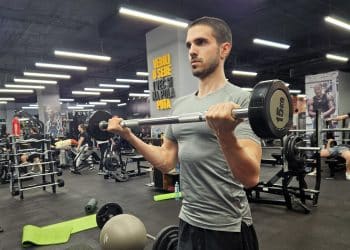

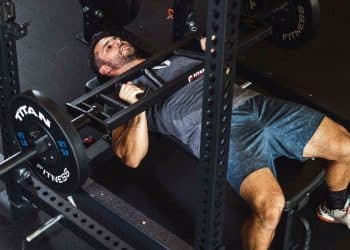

Thank you for the advice, very informative! I will definitely lower the weight a little bit since my elbow has been feeling off lately. And I never stretch my forearms so that’s another thing I can do!
Hi, just wanted to say thank you for your quality article! My elbow has been rusty ever since I did weighted chin-ups with dead hang (I see a combination of a lot of things you suggested not doing…) I will start doing more neutral pullups as well as fewer biceps workouts.
Glad you liked it!
This was immensely helpful. I was suffering with elbow pain on skull crushers and once I adjusted my form via your advice it stopped being so severe. Good stuff.
That’s great to hear!